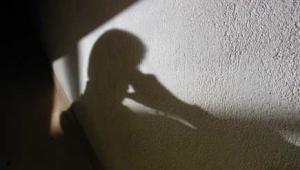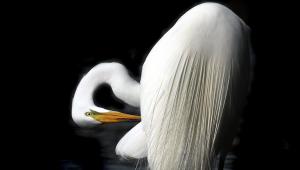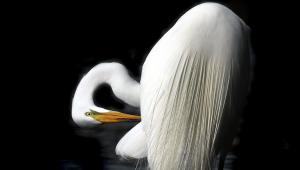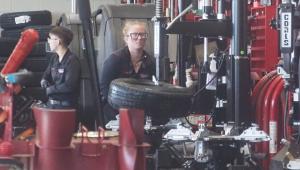Three Tips For Shooting Action Page 2
TIP 3: Composing Action Shots
Most action happens too quickly to allow you to carefully compose each image
and check the background for distractions. But you can check the background
(and lighting) before the subject arrives, and move to a different spot if background
or light aren't good.
 |
|
|
Focus Points
While it's easier to keep a camera's wide, multi-point AF area on
a moving subject, most AF SLRs will respond more quickly if you use only the
central focusing point. If your camera doesn't seem to respond quickly
enough with action subjects, try using single-point AF instead of multi-point
AF.
 |
|
|
Prefocusing
If you know the subject will pass a specific point, such as second base at a
baseball game with an expert base-stealer on first, you can prefocus manually
on that point, and thus be ready to shoot as the subject arrives. This eliminates
the time consumed by (and possible inaccuracy of) autofocusing.
 |
|
|
Continuous Drive
Continuous advance (continuous drive with digital SLRs) lets you shoot a series
of exposures at one touch of the shutter button. This can yield nice action
sequences, but also use up lots of film rather quickly--a big advantage
to digital cameras here. Bear in mind that with many AF SLRs, only the first
image or two of a moving-subject sequence will be really sharp, so it's
probably best to stick to 2-5-frame bursts.
Camera Lag
There is a brief lag between the moment you fully depress the shutter button
to take a shot, and the moment the camera actually makes the exposure. With
pro action cameras, this lag is very brief, but it's there nonetheless.
You have to develop a feel for your camera's lag if you want to get great
action photos. And that just takes some practice.
- Log in or register to post comments

















































